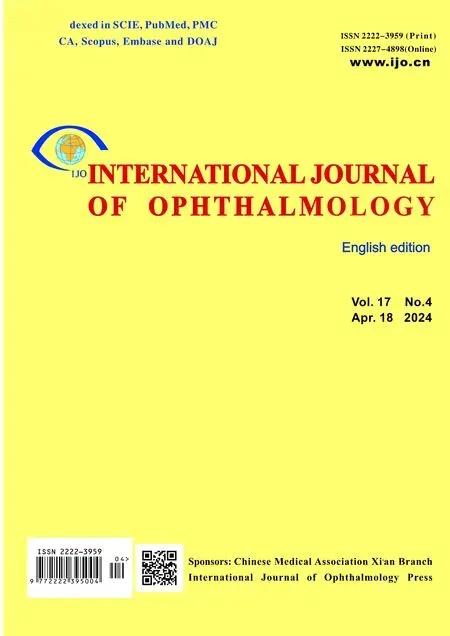Comment on: Recurrence after spontaneous separation of epiretinal membrane in a young woman: a case report
Yusuke Kameda, Yutaka Kaneko, Karin Ishinabe, Nichika Fukuoka
1Yotsuya-sanchome Ekimae Eye Clinic, Tokyo 160-0004,Japan
2Department of Ophthalmology and Visual Sciences, Yamagata University Faculty of Medicine, Yamagata 990-9585, Japan
Dear Editor,
Herein, we provide a commentary on the recently published article by Zeng QZ and Yu WZ[1].This case report provides interesting novel insights into the recurrence of epiretinal membrane (ERM) following self-separation in a young patient.In addition to the study, we have been investigating spontaneous ERM release for many years and have recently published a related paper[2].We support and appreciate the authors’ work which included highly detailed descriptions of the findings and images that can convince readers and agree with their conclusions.Furthermore, we greatly hope that the authors will continue to follow this case to elucidate the exact mechanism of spontaneous ERM separation.
We assumed that the recurrent ERM in the case of Zeng and Yu’s study occurred in eyes in which posterior vitreous detachment (PVD) had already developed because the authors observed the Weiss ring using binocular indirect ophthalmoscopy prior to identifying the recurrence phenomenon.Incidentally, our recent report demonstrated that widespread ERM, which may develop following PVD, disappears because of ERM self-separation[2].The most common mechanism proposed for spontaneous ERM separation in the literature is a process that occurs owing to the induction of PVD (i.e., PVD with pulling of the ERM)[3-5].However, as in our reported case, another mechanism in which the etiological membrane peels off noninvasively through ERM remodeling due to myofibroblast contraction should also be considered[2-4].The latter phenomenon occurs in the eyes in which PVD has already developed, and this contraction force induces slow tangential traction on the edges of the ERM, resulting in gradual separation from the edges towards the center[2-4].ERM self-separation is a rare event that occurs in 3% of patients with ERMs[5].However, from the point of view of the second mechanism (myofibroblast contraction),it is unsurprising that the patient in Zeng and Yu’s study developed ERM self-separation even after an incident of PVD.To the best of our knowledge, no case of spontaneous ERM release occurring twice in the same eye has yet been reported.Therefore, we would like to encourage the authors to report their detailed progress to their readers if a second ERM selfseparation occurs in their patient.
ACKNOWLEDGEMENTS
Authors’ contributions:Kameda Y read the study by Zeng and Yu, wrote the manuscript, and contributed to the comments.Kaneko Y, Ishinabe K, and Fukuoka N helped in reviewing and editing the manuscript.All the authors approved the final version of the manuscript.
Conflicts of Interest: Kameda Y,None;Kaneko Y,None;Ishinabe K,None;Fukuoka N,None.
 International Journal of Ophthalmology2024年4期
International Journal of Ophthalmology2024年4期
- International Journal of Ophthalmology的其它文章
- When to repair a retinal detachment?
- Algorithm of automatic identification of diabetic retinopathy foci based on ultra-widefield scanning laser ophthalmoscopy
- CD3ε of a pan T cell marker involved in mouse Aspergillus fumigatus keratitis
- Neuroprotective effects of acteoside in a glaucoma mouse model by targeting Serta domain-containing protein 4
- Neuroprotective and anti-inflammatory effects of eicosane on glutamate and NMDA-induced retinal ganglion cell injury
- Bone morphogenetic protein-6 suppresses TGF-β2-induced epithelial-mesenchymal transition in retinal pigment epithelium
